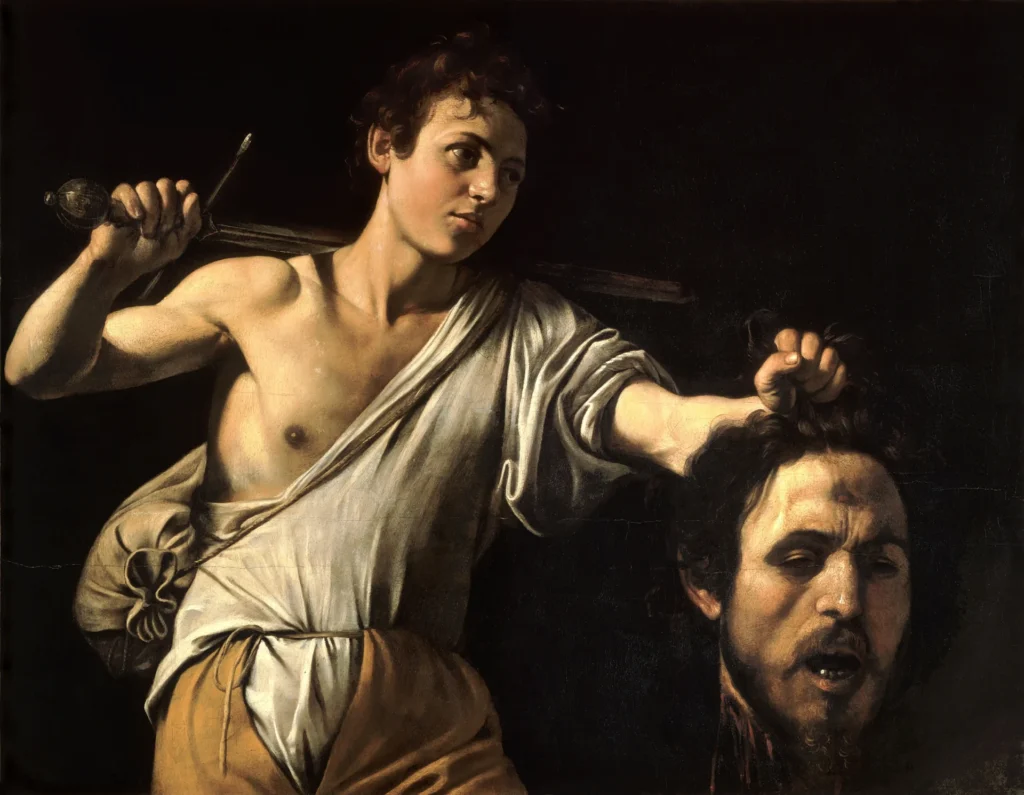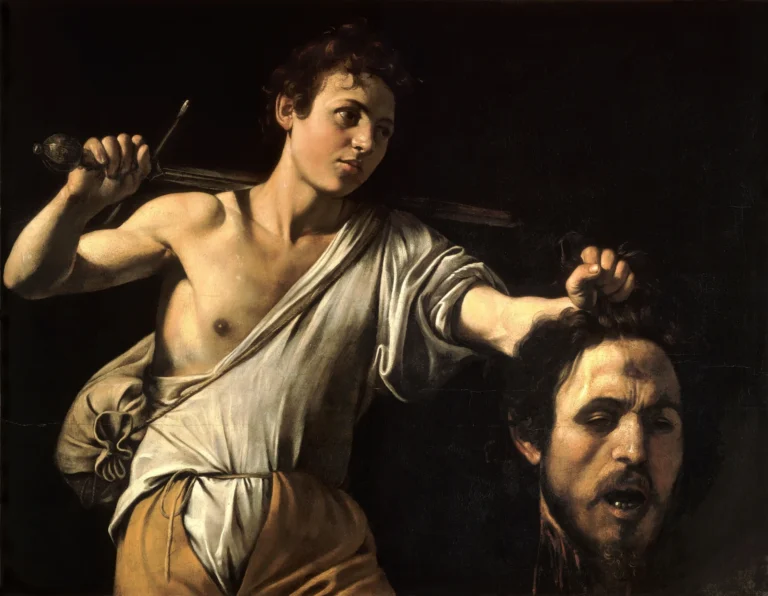David with the Head of Goliath (1600-1601)
Caravaggio’s David with the Head of Goliath examines the complexities of victory and pride across three significant versions created between 1600 and 1601. The first version, housed in the Kunsthistorisches Museum, presents a triumphant David displaying Goliath's head with a lighter mood. The second version in the Museo del Prado features a more dramatic scene, with David shrouded in shadow, evoking deep emotion rather than celebration. The final version in the Galleria Borghese introduces profound psychological elements, with Goliath's head speculated to be a self-portrait of Caravaggio, reflecting the artist's inner struggles and personal history.
1600 - 1601
About the Artwork
Did You Know
Liked what you see? Add it to your collection.
Enjoyed reading? Share it.
... continued
Version in the Kunsthistorisches Museum, Vienna (c. 1600-1601)
This painting, dated around 1600-1601, is housed in the Kunsthistorisches Museum in Vienna. It depicts David holding the head of Goliath, showing the moment after David's victory as described in 1 Samuel 17:57, where David presents the Philistine's head to Saul. The painting features David striding in triumph with the head in his hand, which is a more conventional pose compared to other versions. The mood is less dark, and David appears more triumphant than introspective. The head of Goliath is not a self-portrait in this version but rather a generic representation.
Version in the Museo del Prado, Madrid (c. 1600)
This early version, painted around 1600, is located in the Museo del Prado in Madrid. It shows David as a young boy kneeling on Goliath's torso, holding the giant's head by the hair. The scene is characterized by intense personal and private drama, with minimal light highlighting David's leg, arm, and flank, as well as Goliath's head and shoulders. David's face is almost invisible in the shadows, and there is no triumph or celebration depicted.
Version in the Galleria Borghese, Rome (c. 1605-1610)
This version, dated between 1605 and 1610, is housed in the Galleria Borghese in Rome. It is notable for Goliath's head being widely accepted as a self-portrait of Caravaggio. David is depicted holding the head in his gloved hand, with a sword and an inscription on the sword reading 'H-AS OS,' which stands for 'Humilitas Occidit Superbiam' ('Humility kills pride'). This painting is often interpreted as having a deeper psychological and biographical significance, with some suggesting it was sent to Cardinal Scipione Borghese and ultimately to Pope Paul V as a plea for pardon after Caravaggio's conviction for murder. The painting may also be seen as a double self-portrait, with David possibly representing Caravaggio as a young man.










